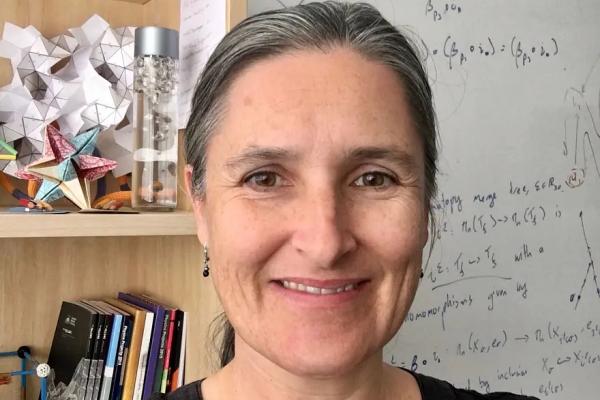
Title: Tile-Transitive Tilings of the Euclidean and Hyperbolic Planes by Ribbons
Speaker: Vanessa Robins (Australian National University)
Speaker's URL: https://physics.anu.edu.au/contact/people/profile.php?ID=75
Abstract: With Benedikt Kolbe in E. Gasparovic et al. (eds.), Research in Computational Topology 2 (2022) https://doi.org/10.1007/978-3-030-95519-9_4
Patterns built from repeating motifs appear in all cultures and have long been studied in art, mathematics, engineering and science. Most mathematical work has focussed on patterns in the Euclidean plane (the book “Tilings and Patterns” by Grunbaum and Shephard contains a comprehensive survey of the field up to the mid 1980s) but the importance of hyperbolic geometry as a model for natural forms is increasingly recognised.
An example that inspires this work is the discovery that co-polymer molecules consisting of three mutually immiscible arms can self-assemble into structures modelled by stripes on the gyroid triply periodic minimal surface. The gyroid surface has genus three in its smallest side-preserving translational unit cell, and therefore has the hyperbolic plane as its simply-connected covering space. Its 3d space-group symmetries induce a non-euclidean crystallographic group generated by hyperbolic isometries that are known explicitly. Stripe patterns on the gyroid lift via the covering map to tilings of the hyperbolic plane by infinitely long strips, or ribbons.
The defining property of a ribbon tile is the existence of a translation isometry that maps a given tile back onto itself as well as preserving the tiling pattern of the whole space. I will describe how to classify and enumerate crystallographic ribbon tilings of the hyperbolic plane by viewing them as decorations of 2-orbifolds.
Additional Dates &/or Times
Tue 11/8 4:10 PM – Pomerene 150
Topological crystallography.
Th 11/10 1:50 PM – BE 130
Evolution of local motifs and topological proximity in self-assembled quasi-crystalline phases
Mon 11/14 12:40 PM – BE 260
Correspondence of max-flow to the absolute permeability of porous systems
URL associated with Seminar: https://tgda.osu.edu/activities/tdga-seminar/
